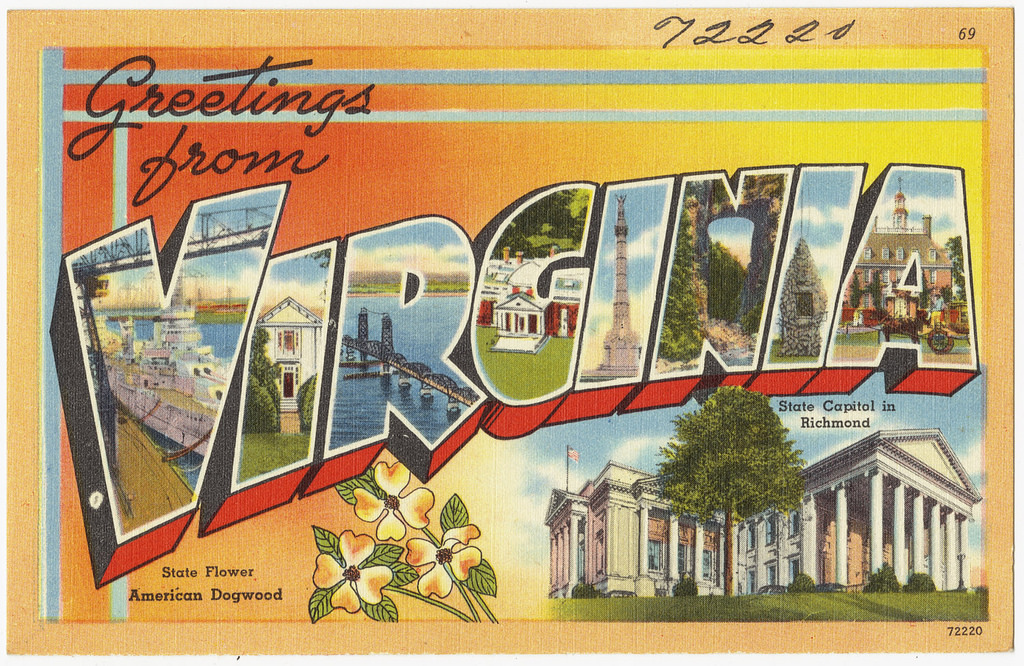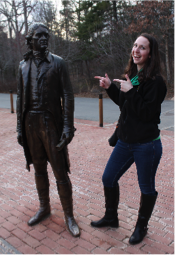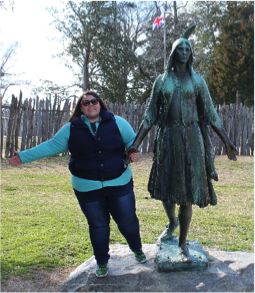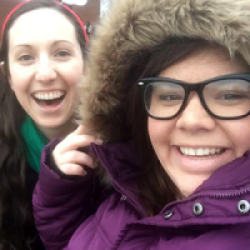
Our first big PBL unit all started as we got in the car to go to a conference. We often road trip together, having grown up in the same small town in Pennsylvania, though we teach fourth grade in Virginia now, so we thought it would be fun to travel somewhere in Virginia over Spring Break. Being the history nuts that we are, we couldn’t decide where to go.
We bounced ideas back and forth about when we could go and how much we could fit into one trip, and then one of us suggested that this could be a great idea for a project; we could challenge the students to plan our Spring Break trip! I thought it was a terrible idea, but Jess convinced me it would work. Then when we realized that the project covered multiple standards in three subject areas—Math, Literacy, and Virginia Studies—the light bulb went off that we could make this project work! We spent the rest of the conference trip planning our project, “Teacher Trekkin’.”
Parameters and Plans
We phrased the students’ challenge as a task that had both a team and individual aspect: “Work in teams to plan a three-day road trip for your teachers during Spring Break with a $600 budget. You will also write a paper justifying how each destination is related to Virginia Studies.”
Over the next few weeks, we planned, knowing we would miss something the students would catch, but we tried to plan it all anyway. We collected brochures for attractions all over Virginia so the students could get an idea of what was out there. Our school recently began using the Schoology LMS, so we thought the project would be a great way to teach the students how to use it responsibly, in an authentic way. Our wonderful Tech Specialist helped us set up a new page specifically for the project that both our classes could collaboratively use. We pitched the idea to our principal, who was thrilled that we were willing to take on such a big project, since our district was so new in their PBL journey.

The Launch and the Struggle
Finally, we launched the project to both our classes using Nearpod. The students didn’t quite believe us at first when we said we would actually take the trip when they finished it. They chose their own groups with anyone in either class; we used Google Docs and Schoology to organize the groups and track their progress. This also allowed them to communicate and collaborate virtually since we couldn’t put our classes together physically every day that we worked on the project.
Every day our students read and researched a topic. They quickly realized that it was tough work to put everything together in a way that made sense. This included using measurement, elapsed time, decimals, and every day literacy skills to show off what they had learned about Virginian history and geography. Some groups struggled in the murkiness and confusion before finally making it out with a clear itinerary for the trip. We saw our students grow in confidence in their choice of study, decision-making, ability to use the Internet and their literacy skills to go find an answer to a question they had. They also learned that not having an answer right away, though frustrating, can be acceptable for the moment. However, then you have to tackle the problem again the next day until you do find an answer.
Hit the Road!
Our original plan was to randomly choose one project and take that trip. The projects were pretty detailed and overlapped several times, so we laid out a big map of Virginia, put a dot at each destination mentioned in their projects, and went to all the ones that we could reasonably reach in three days. As we took the trip, we recorded videos at each stop and posted them to our Class Dojo pages so that the students could get updates on our progress and travel.

Was it Worth it?
Doing this project helped our students be more self-guided and curious. At first, they were at a loss for destinations because they waited for us to tell them what to do. As they realized it was all up to them, they took initiative and started asking us questions that—of course!—we hadn’t thought of, such as if we had any phobias or food allergies, because that influenced where they sent us and what activities they wanted us to do.
Several times I had the overwhelming feeling of “what have we gotten ourselves into?” and Jess’s unwavering positive attitude made me want to punch a wall. For example, there was a time one group wanted us to go to Chincoteague Island and “just look at the ponies all day.” Other times I was the positive one, such as when one of Jess’s students lost school technology privileges and we had to find an alternate way for him to participate with a group. As we went on, we adjusted to fit the needs of our students, who constantly surprised us with their thoughtfulness toward what we might want to do on the trip.
Looking back, next year we will probably put more constraints on the project. The students will most likely have a deadline farther away from the trip, and maybe we can convince the school to pay for it (fingers crossed!). Additionally, we hope to strengthen some of the PBL design elements that were not so strong this time around—like Critique and Revision and Reflectionduring the project. We hope to keep the Student Voice and Choice and the Sustained Inquiry just as strong as they were this time.
Was it worth it? Definitely. I wonder where they’ll send us next year?

